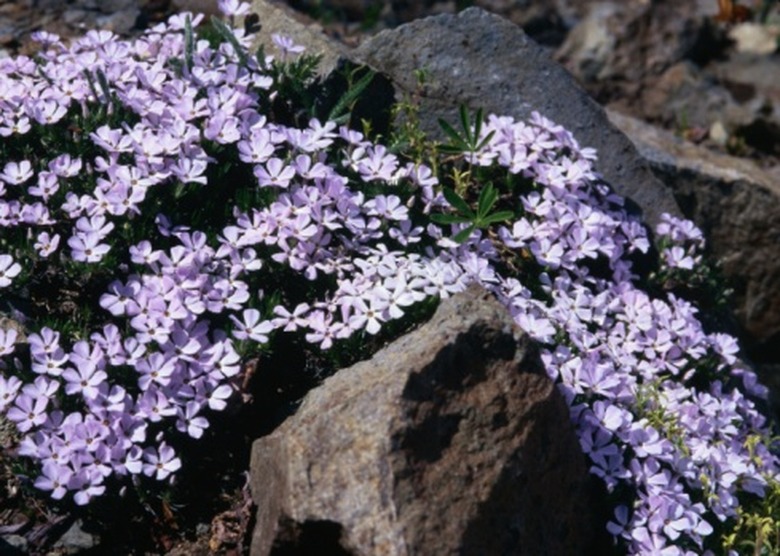How Fast Does Creeping Phlox Grow?
Creeping phlox (Phlox subulata) is a perennial ground cover prized for its masses of spring blooms. In average conditions, creeping phlox grows at a slow to moderate rate, so don't expect it to rapidly fill in empty areas in your garden. It makes an attractive accent plant, however, and drapes nicely over the edges of containers.
Size
Size
Creeping phlox remains rather compact in shape throughout its lifespan, with a maximum width of 2 feet and height of about 6 inches. Like other ground covers,creeping phlox takes a few years to reach maturity — about two years on average, according to the North Carolina State University Cooperative Extension. This means it grows an average of about an inch per month. The rate of growth depends on a wide variety of conditions, however, including cultural ones.
Climate
Climate
Climate plays a large part in how fast creeping phlox grows. The plant has a wide growing area. It thrives in U.S. Department of Agriculture plant hardiness zones 3 through 10, according to the University of Florida Extension website. The cold-hardiness of creeping phlox makes it a desirable choice among many home gardeners who live in cooler climates. Cold weather, however, will limit the growth of the plant. Although it grows during the warm months, it becomes dormant during freezing winters. Home gardeners in climates with year-round mild temperatures will see their creeping phlox continue to grow month after month.
Culture
Culture
Proper cultural practices are also important for maximum growth. Although generally hardy, creeping phlox suffer if planted in overly wet, soggy soil. Instead, grow this plant in rich, loose soil that drains well. Creeping phlox also grows best if exposed to full sunlight, according to the University of Florida Extension, although it also grows in partial shade. Full shade, however, slows the growth rate of the plant and limits blooming.
Problems
Problems
Diseases and insect pest problems can also slow the growth of this plant. Hot, dry conditions can lead to spider mite infestations. These and other sap-sucking insects can stunt the growth of the plant. Foliar nematodes feed on the small, slender leaves of the plant, weakening it and possibly even shortening its life. Overly wet conditions can lead to powdery mildew and other fungal diseases, which although usually not threatening, can still weaken the plant and stunt its growth. Spray the plants with insecticide if you notice insect activity, and keep the soil moist (not soggy) and the foliage dry.
